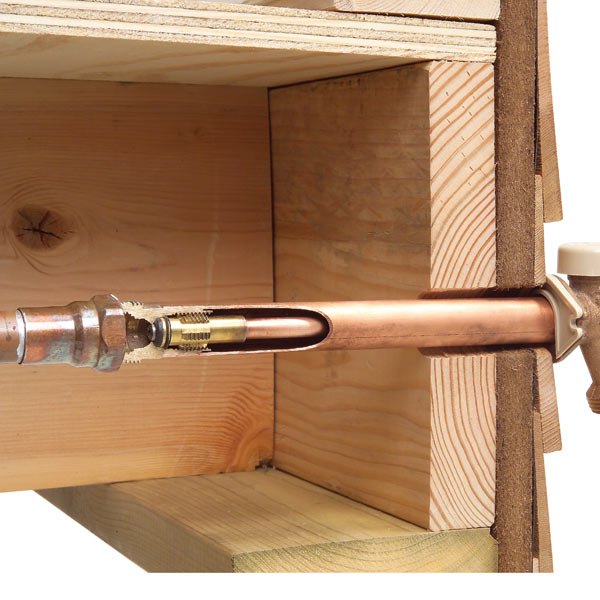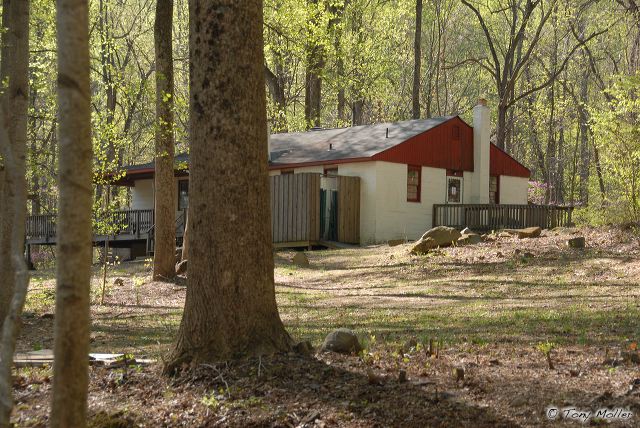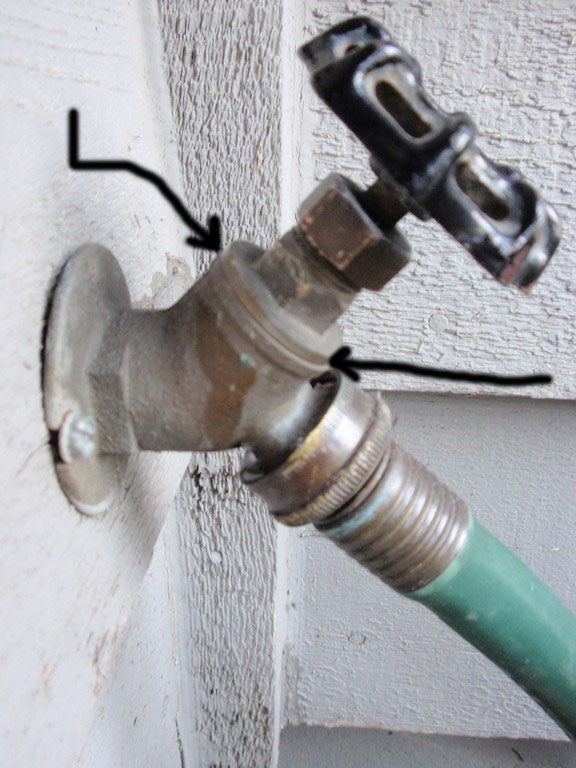This time around, we shall cover How To Shut Off Outside Faucets For Winter. Obviously, there is a great deal of information on No Shut Off Valve For Outside Faucet on the Internet. The fast rise of social media facilitates our ability to acquire knowledge.
How To Find Outdoor Water Shut Off Valve-related material is also connected to Forgot To Turn Off Outside Water and Where Is The Water Shut Off Valve For Outside Faucet. As for further searchable items pertaining to Do You Need To Turn Off Outside Water In Winter, they will likewise have anything to do with How To Properly Winterize Your Outdoor Faucet.

40 Tips to How To Shut Off Outside Faucets For Winter | Should Outside Faucets Be Left Open Or Closed In Winter
- First, remove the hose or other attachment from your outdoor faucet to prepare for winter. Garden hoses attached to an outdoor faucet can trap water in the faucet itself. This greatly increases the risk that the faucet will crack or burst in freezing temperatures. - Source: Internet
- It’s essential to double-check for a shut-off valve on your water line before continuing. The best way to winterize your outdoor faucets is by shutting off the water flowing to the faucet itself. So, double-check before you give up on finding your shut-off valve. - Source: Internet
- For most of the U.S. the transition from warm weather to cold weather is right around the corner and can often leave homeowners unprepared. Taking the time to prep your outdoor plumbing for winter now, will be beneficial in the long run. Follow these tips while time is on your side, instead of waiting until the cold weather arrives. - Source: Internet
- To keep the neighbor kids from running your hose when you’re on vacation, or to keep the pipes from freezing over winter, it is necessary to shut off the valve to the outside faucet. It’s simply a matter of locating the outside faucet, which is the point where the water is accessed outside of the house. That is the best place to look for a shut-off valve. - Source: Internet
- Look around your property to locate all the outdoor faucets (if you are a new homeowner, you may find them in some hidden areas). Remove all garden hoses and allow all water to drain from faucets and hoses. - Source: Internet
- Turn off the water supply. Go outside and open all the (outside) faucets to let out any water that has accumulated in the pipes. Close the taps again and you can also put caps on the ends. - Source: Internet
- Most outdoor faucets are connected to a shut-off value in your home. This valve controls the flow of water to the outdoor faucet. Usually, the shut-off valve is located in the basement, crawl space or utility room. - Source: Internet
- A good starting point is to winterize your outdoor faucets (hose spigots). Doing so is relatively easy, thanks to insulated covers you can purchase to fit over the spigots. Installing these covers, along with performing a few simple winterizing procedures, can prevent outdoor faucets from rupturing due to freezing temperatures. - Source: Internet
- If there is water anywhere outside your home in the winter, it can freeze, including inside your pipes. If water inside your pipes freezes, it can cause significant damage to your pipes and impact your whole plumbing system. One of the risks is having your pipes burst, which is more likely to happen inside your walls, thus causing extensive damage to your home. To prevent this from happening, it’s important to add draining outdoor faucets to your winter preparation to-do list. - Source: Internet
- Whether you have a northern vacation home or you live in a region where the weather can turn unusually cold, it helps to prepare your outdoor faucets for winter before freezing temperatures arrive. Many outdoor faucets have an indoor safety valve that allows you drain the water from the outdoor section of pipe, reducing the chance of the pipe bursting when trapped water freezes. Shutting off the water to your outdoor pipe is also handy if you need to replace the faucet or outdoor section of pipe. You only have to turn off the safety valve for that fixture instead of shutting off water to the entire house. - Source: Internet
- Some outdoor faucets attract debris, which can cause clogs and backup water flow. To prevent these from being a problem during the winter months, you’ll need to use a drain snake to clear the pipe before you close it off. Plumbers use drain snaking long tools to break up drain clogs and clear pipes. - Source: Internet
- Installing a frost-free outdoor faucet is a clever move. Unlike a standard outdoor faucet, a Frost-Free hose bib is designed to safely drain off any water remaining in the pipe when you close the shutoff valve. Although you will still need to winterize this outdoor faucet, the process is simpler. - Source: Internet
- If your home is older, you may not have an indoor shutoff valve for your outdoor faucets. However, you can ask your plumber to install one. Our professional team can replace your standard faucet with a frost-free one. With these types of faucets, you’ll be able to leave the water on any time of year and not worry about frozen water or pipes bursting. - Source: Internet
- If your outdoor faucet does not have a shut-off valve, first disconnect any hoses or attachments from the faucet. Then, turn off the main water for your home and open the faucet to purge any remaining water in the line. Once this is done, close the faucet valve and turn the water back on. Next, you can winterize your faucet by fitting an insulative cap over the faucet. Alternatively, you can prevent frozen faucets and burst pipes by replacing your outdoor faucet with a frost-free faucet. - Source: Internet
- In Charlotte, cold weather comes fast each year and does its best to destroy our water pipes. The best way to minimize the damage from cold weather on household plumbing is to do a little winterizing, which essentially means protecting them against the freezing that can expand the water and rupture pipes. A busted water pipes can cause thousands of dollars of damage when water soaks walls, ceilings, and floors, so it just makes sense to take some time to prevent the possibility. - Source: Internet
- As a home owner you’ll want to winterize outside faucets (hose spigots). This is relatively easy to do with insulated covers that fit over the spigots, which cost between $10 and $20 at Lowes or Home Depot. Installing these covers, along with performing a few simple winterizing procedures, can prevent outdoor faucets from bursting due to freezing. - Source: Internet
- In addition to other preventive measures, it is wise to install insulation for each faucet prior to winter. Outdoor faucet covers are manufactured specifically for this purpose, and come in Styrofoam and insulated cloth sacks. These covers usually hook over the faucet to stay in place, so are very quick and simple to install and remove each year. - Source: Internet
- Although all exterior pipes have the potential to burst, metal pipes are most at risk. Plastic pipes, such as PVC and PEX, are slightly less likely to break. Because most outdoor faucets and hose bibbs are made of metal, they are at a high risk of cracking or breaking when exposed to freezing cold temperatures. - Source: Internet
- In colder climates, winter comes along each year and does its best to destroy our water pipes. The best way to minimize the damage from cold weather on household plumbing is to do a little winterizing pre-season, which essentially means protecting them against any freezing that can expand the water and rupture the pipes. Burst water pipes can cause thousands of dollars of damage when the water soaks walls, ceilings, and floors, so it just makes sense to take preventive measures when and where you can. - Source: Internet
- For extra protection, you can buy insulation covers to put over your faucet. It will keep it safe from snow, ice, and other weather hazards during the winter months. These kits can be placed on your faucet for the colder months, and removed during the spring and summer. - Source: Internet
- The best way to protect your outside water pipes from freezing cold is to shut off water flow to the pipes. Then, open the exterior water faucets to drain any remaining water trapped in the pipe. Your outside water pipes should have a water supply valve on the line, which allows you to shut off the flow of water near the source. In most cases, this water shutoff valve is located inside your basement, crawlspace, or utility closet. - Source: Internet
- If you live in a region where freezing temperatures persist for weeks or months, it’s a good idea to replace your faucet with frost-free faucets. A frost-free faucet is built to withstand extreme cold even if your faucet does not have a shut-off valve. It will resist breaking due to cold weather. - Source: Internet
- To protect exterior faucets and hose bibbs, winterize your outside water pipes 2 weeks before the first average freeze. Unlike interior pipes, which are warmed by the heat inside your home, exterior water pipes can freeze once temperatures drop to 32℉ (0℃). As little as 6 hours of exposure to freezing temperatures can freeze the water in outside pipes solid. To prevent a burst pipe or cracked hose bibb, winterize before freezing weather arrives. - Source: Internet
- It’s that time of the year again. The lawn mower will soon be put away for the winter and your best gardening tools will soon be stowed away until next spring. Roto Rooter has several handy tips for making sure that your yard’s drainage, your home’s downspouts and outside faucets are ready for winter. - Source: Internet
- After you have checked for active leaks and before you start shutting down your outdoor plumbing, be sure to shut off the water leading out of your home so water doesn’t rest in your pipes. If your home is equipped with interior shutoff valves leading to the outside faucets, turn off the valve, then go outside and turn on the outside hose bibs until all remaining water in the line drains out. Water left in your pipes will freeze, expand, and possibly burst your pipes. By draining your pipes completely, you avoid the high risk of frozen pipes and pricy solutions. - Source: Internet
- You can protect your outdoor faucet from freezing by installing an insulative cover. Outdoor faucet covers prevent cold, frost, and ice from penetrating your plumbing. They help to prevent cracked faucets and burst pipes. - Source: Internet
- If you can’t shut off and drain your outdoor lines, the next best thing is to have a frost-free hose bib installed. This bib will completely replace your old faucet, and runs several inches into the side of the house where a shut off valve is located. This way, you create a valve for that specific faucet, so you can easily drain it each winter. Removing your old bib or spigot and replacing it with one that is frost free may be confusing; it may involve soldering, caulking and general plumbing skills and knowledge. If you need help don’t hesitate to call Roto-Rooter for a professional install. - Source: Internet
- The building code in most regions requires that outdoor faucets have a shut-off valve. However, not all regions have building code guidelines that require these shut-off valves. Additionally, a previous homeowner may have made repairs that violate building code. So, although your outdoor faucets should have shut-off valves, there are cases where yours may not have one. - Source: Internet
- Go back outside to each of your outdoor faucets. If all the water has run out, you can turn the faucet off. Be sure to tighten it as much as you can. - Source: Internet
- Cold weather can cause water in your pipes to freeze and expand. This can lead to busted pipes and costly repairs. However, by properly preparing your outdoor faucets for winter, you can avoid trouble. - Source: Internet
- It’s crucial that you remove all water from your outdoor taps and hoses to prevent it from freezing and causing damage. The best time to drain your outdoor faucets is in early to mid-fall. Doing this correctly requires a few simple steps, including: - Source: Internet
- Now, for the most important part. Open up all of your outdoor faucets and allow all of the water to drain out of the pipes. You can use a bucket for water collection, if necessary. - Source: Internet
- Pipes are capable of bursting any time they are exposed to freezing temperatures. Although interior pipes are generally safe at temperatures as low as 20℉ (-7℃), outdoor faucets can freeze as long as temperatures are at or below 32℉ (0℃) for at least 6 hours. This is because outside water pipes do not receive radiant heat from your home, making them more prone to freezing. - Source: Internet
- In the spring and summer months, Roto-Rooter receives many plumbing service calls for problems with homeowners’ outside faucets. When the homeowner turns on their outside faucet it runs normal, however, when they connect their garden hose and try to use, water backs up into the pipe and leaks into the basement. These plumbing problems may be caused by the hose bib freezing in the winter, thus resulting in a crack in the line from the faucet. The crack is probably tight enough to prevent water when there is no backpressure, but the moment you put a hose on and increase the backpressure, it leaks into the house. Look into getting a new sillcock to correct this issue. - Source: Internet
- In northern regions, homes are constructed to withstand winter temperatures. Interior pipes are often insulated or are run through well-insulated spaces. If your region doesn’t typically experience freezing weather, the pipes may not be protected from cold. Your interior pipes may freeze at the same point your outside pipes do. In short, any time temperatures reach the freezing point, there is a danger of broken water pipes. - Source: Internet
- While there are specialty outdoor spigots marketed as “freeze-proof,” there is no guarantee that these faucets will not freeze in the coldest weather. Even these faucets can benefit from outdoor faucet covers properly installed. Long term, though, installing freeze-proof spigots is a good next step to avoiding problems. This is best done while the weather is still above freezing. - Source: Internet
- Most faucet covers use one of two styles. Faucet covers are either square or dome-shaped shells made of rigid thermal foam with flexible gaskets that fit right over outdoor faucets, or they are flexible bags made of thick fabric stuffed with insulation. When properly installed so that they seal tightly around the base of the faucet, either style provides good insurance against spigots rupturing due to freezing. - Source: Internet
- Hoses themselves can be damaged by exposure to cold. If you forgot to disconnect your hose in winter, take quick action to remove and store it. This will increase the lifespan of your hose, which saves you from replacing it in the spring - Source: Internet
- If you have a hose attached to the faucet, disconnect it and take off the spray nozzle. Drain the hose thoroughly, repair any pin holes, and coil it neatly. (Your hose will survive the winter in good shape if you store it horizontally on a flat surface, sheltered from snow and direct sunlight.) - Source: Internet
- Winterizing your home means preparing against Mother Nature without enduring preventable damage. Who should winterize their home? Anyone who lives in an area where temperatures are regularly below 32 degrees Fahrenheit during the winter. It’s especially crucial for snowbirds who leave their home during winter for an extended period. Consider these tips to safeguard your water pipes from freezing. - Source: Internet
 Here are some recommendations for locating information about Temperatures are Falling –Turn off Your Outdoor Faucet to get you started:
- Research Should I Leave Faucets Open After Shutting Off Water?-related information from credible sources. This includes libraries, websites, and even journalistic professionals.
- When researching how to turn off outside water faucet for winter, it is vital to be aware of the numerous sorts of electronic media sources, such as Google and YouTube. Social media networks, such as Facebook and Twitter, are also likely to include information on No Shut Off Valve For Outside Faucet.
Here are some recommendations for locating information about Temperatures are Falling –Turn off Your Outdoor Faucet to get you started:
- Research Should I Leave Faucets Open After Shutting Off Water?-related information from credible sources. This includes libraries, websites, and even journalistic professionals.
- When researching how to turn off outside water faucet for winter, it is vital to be aware of the numerous sorts of electronic media sources, such as Google and YouTube. Social media networks, such as Facebook and Twitter, are also likely to include information on No Shut Off Valve For Outside Faucet.Video | How To Shut Off Outside Faucets For Winter
To obtain the most accurate information on How To Find Outdoor Water Shut Off Valve, it is essential to investigate the credibility of each source by reading.
This page contains multiple How To Turn On Outside Tap From Inside-related films from a variety of sources, which can expand your understanding about 3 easy steps for winterizing your outdoor faucets. Internet is an excellent resource for getting information on a range of subjects.
## Here are some crucial aspects concerning Do All Outdoor Faucets Have Shut Off Valves:- How To Shut Off Outside Faucets For Winter
- How To Shut Off Outdoor Faucets For Winter
- How To Shut Off Outside Taps For Winter
- How To Turn Off Outside Spigot For Winter
- How To Turn Off Outside Taps For Winter Uk

With so many websites and forums giving Should I Leave Faucets Open After Shutting Off Water-related information, it is not difficult to locate what you want.
This is a highly unconventional method for obtaining knowledge on Where Is The Water Shut Off Valve For Outside Faucet, compared to what most people are accustomed to. It permits a more in-depth examination of the content and application of information regarding How To Turn On Outside Tap From Inside.
 Methods for creating aesthetically pleasing and informative presentations of Cold Weather Tips for Potential Freezing Weather information. They can be utilized in business and marketing environments to convey messages regarding Should I Leave Faucets Open After Shutting Off Water. Consequently, we additionally supply photographs regarding Do All Outdoor Faucets Have Shut Off Valves.
Methods for creating aesthetically pleasing and informative presentations of Cold Weather Tips for Potential Freezing Weather information. They can be utilized in business and marketing environments to convey messages regarding Should I Leave Faucets Open After Shutting Off Water. Consequently, we additionally supply photographs regarding Do All Outdoor Faucets Have Shut Off Valves.
This article concludes by providing an overview of How to protect an outside faucet from freezing in winter. In addition, Turning On Outside Water After Winter and Leave Outdoor Faucets Open In Winter are discussed to compare your understanding of How To Turn On Outside Tap From Inside.